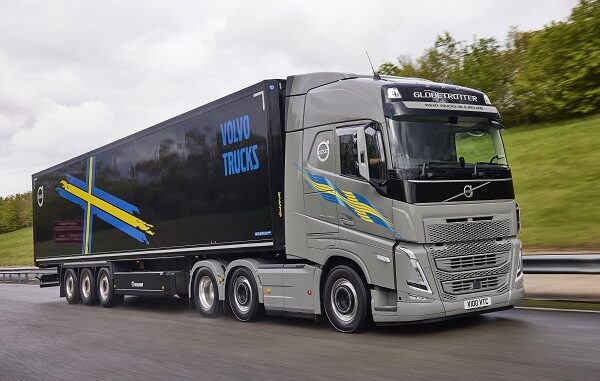
Last year saw several iconic trucks put through their paces and in different parts of the world, writes Transport News’ chief road tester and Lochmaben Transport’s co-director Stevie Walker (full story featured in the February 2025 issue of Transport News).
The shortlist for the Transport News Top Truck Award included:
- Renault Trucks turbo compound 480 T High (February),
- Iveco X-Way (April),
- Scania 410R CNG (June),
- Scania S770 (July),
- Volvo FH Aero 500 turbo compound truck (September),
- and the Volvo FH16 Aero 780 (October).
After much deliberation I, alongside the panel of judges, felt that the Volvo FH Aero 500 I-Save truck was too good to be knocked off its perch.
So, this year’s Top Truck Award went, for the second year running, to the Volvo’s I-save, albeit this time it was the 500hp version.
Overall, the panel of judges liked the new Aero and how it looks. They did feel that the manufacturer had missed a trick by not going the extra yard and creating a new ‘bigger cab’, preferring instead to dust off an existing version, but did acknowledge that the I-Save appears to have made some distance between itself and its competitors in the long haul sector when it comes to performance and fuel economy.
Last summer I headed out to the Greek city of Thessaloniki to drive the new Aero range on a 320km test route. One of the 12 Volvo demonstration vehicles neatly lined up at the starting point FH 500 I-Save using turbo compound technology.
The Volvo Iron Mark is now lower and just above the bumper giving the truck what looks like a bit of an overbite but also allows for a large area above for company livery.
I still can’t decide if I prefer the look of the standard FH to the Aero, as they are both very attractive trucks, the Aero however has a much more futuristic look going on, like an artist’s impression of future trucks has come to life.
I heard one comment that it has a similar look to a luxury coach but all in all I think it is a real head turner. For once the legislation changes are sensible and of real benefit to the industry giving designers a bit more freedom to improve aerodynamics as well as driver comfort and safety.
When I say that Volvo has grafted the new front onto the existing cab, this is no Heath Robinson affair. The 240mm extension to the front is tapered to both direct airflow and to minimise any extra turning area.
Much thought has also been put into closing up gaps and tidying things up, the sun visor has gone, although still an option as are the mirrors which have been replaced with Volvo’s Camera Monitoring System (CMS).
With all these changes Volvo are reporting a claimed 5% fuel economy improvement through an 11% reduction in drag over the current equivalent FH model.
The Aero will be sold alongside the current model commanding approximately a £5,000 premium, which buys you the new frontage along with CMS. Not a bad deal I would say especially on the right application so might be worth getting the calculator out.
I think the world of the turbo compound engine and our own 69 plate has over 700,000km of pretty much trouble-free graft under its belt whilst providing fantastic fuel returns. The latest Aero version boasts enhanced I-See software which combined with the Aero streamlining has the potential to return even bigger bang for your buck.
The 500 TC handles the terrain well but is no match for the grunt provided by the electric version, beyond that everything is the same with all the new kit giving the same driving experience. When the Aero hits the road for real, I’m sure the TC will be the popular choice for operators with economy in mind.
The sight of the demonstration trucks on the Greek roads must seem like an alien invasion to the locals as the majority of trucks I have seen here are Euro 5 or older.
Volvo’s mantra for the Aero is ‘little drops make the mighty ocean’ where fine tuning of all aspects of their products will gradually make the safest most efficient and comfortable trucks available, as we adopt these technologies this will also gradually filter its way down to countries which are playing catch up.




